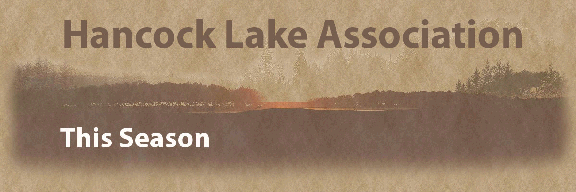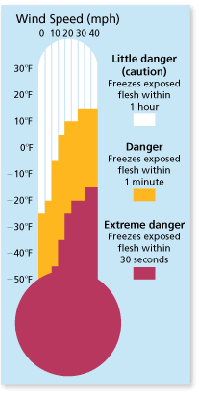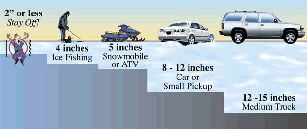Harshaw weather facts:
• July is the average warmest month.
• The highest recorded temperature was 99 degrees in 2006.
• The average coolest month is January.
Snowmobile trails open: December 24, 2015
Links for snow conditions:
Oneida County Snowmobile trails opened on January 2, 2016. Specific trails (e.g. lakes) remain closed.
Safe-Eating Guidelines for Most Wisconsin’s Inland (Non-Great Lakes) Waters (Source: The Wisconsin Fishing Report by DNR’s Fisheries Management program, Spring 2013):
• Women of childbearing years, nursing mothers and all children under 15 may eat:
1 meal per week - Bluegill, crappies, yellow perch, sunfish, bullheads and inland trout;
and
1 meal per month - Walleye, pike, bass, catfish and all other species.
Do not eat - Muskies.
• Women beyond their childbearing years and men may eat:
Unrestricted - Bluegill, crappies, yellow perch, sunfish, bullheads and inland trout;
1 meal per week - Walleye, pike, bass, catfish and all other species;
and
1 meal per month - Muskies.
Earliest observed on-nest date for birds observed to be sitting on nest with eggs before end of March:
Stop Aquatic Hitchhikers (Source: Wisconsin Natural Resources Magazine, April 2013):
• Prevent the spread of invasive species and fish diseases by not transferring water, fish, fish eggs or other aquatic organisms between waterways.
• At the boat launch, inspect your boat, trailer and equipment and remove any plants, sediment and animals.
• On land, drain all water from the motor, live well, bilge and transom well.
• Empty your bait bucket into the trash, not the water.
• After leaving the launch wash your boat, tackle, trailer and other equipment with hot (104 degrees) tap water or a high-pressure sprayer. Or, allow your boat and other equipment to dry thoroughly in the sun for at least five days before moving to another body of water - some invasive species may not be visible to the naked eye and can survive for long periods of time out of water.
• If you had your watercraft where a fish disease called viral hemorrhAgic septicemia (VHS) has spread (check with your local DNR), disinfect your boat before moving to an uninfected lake.


